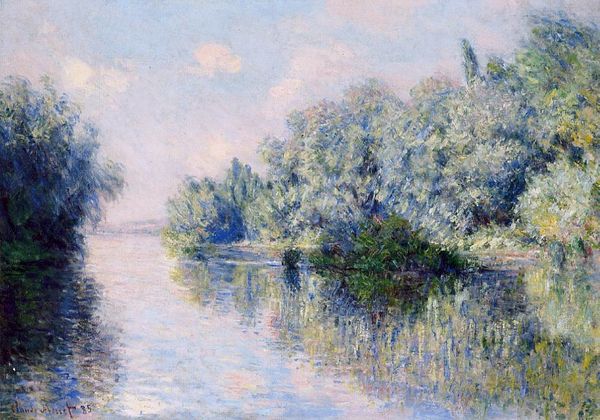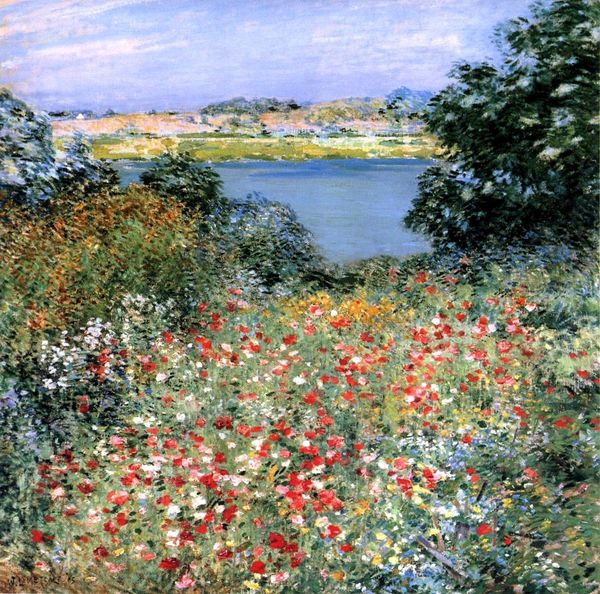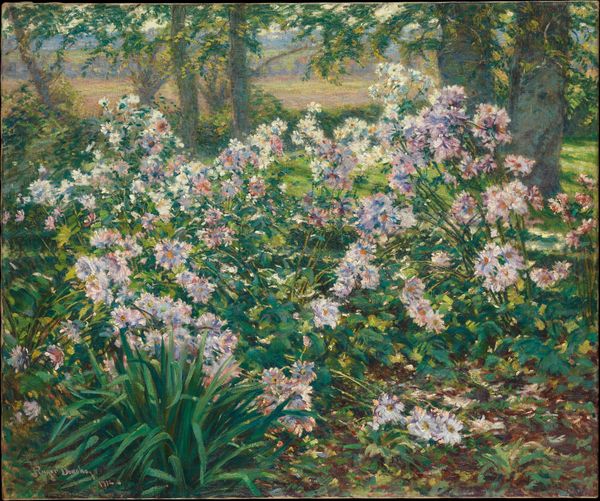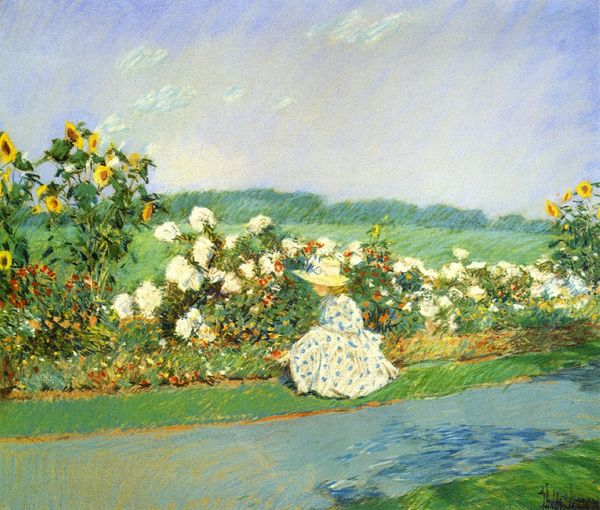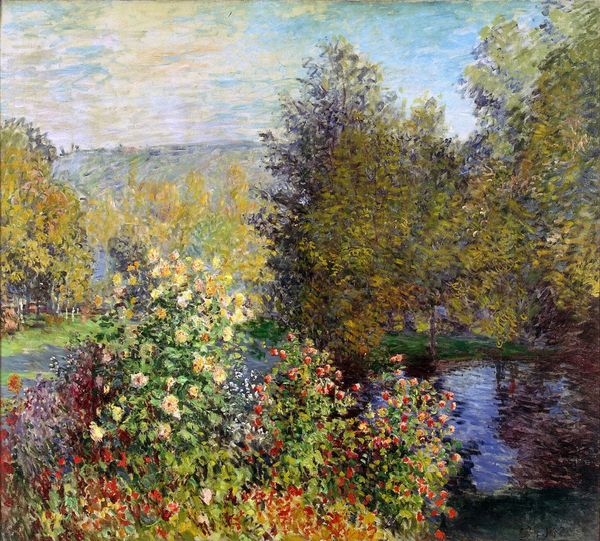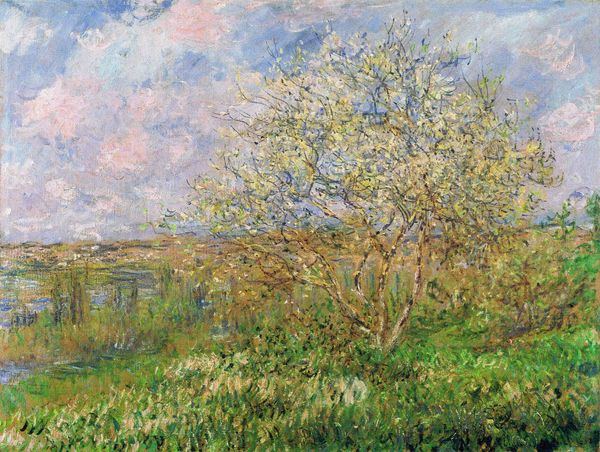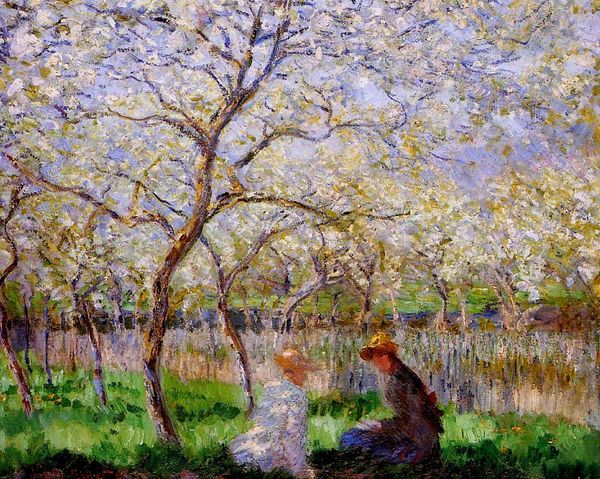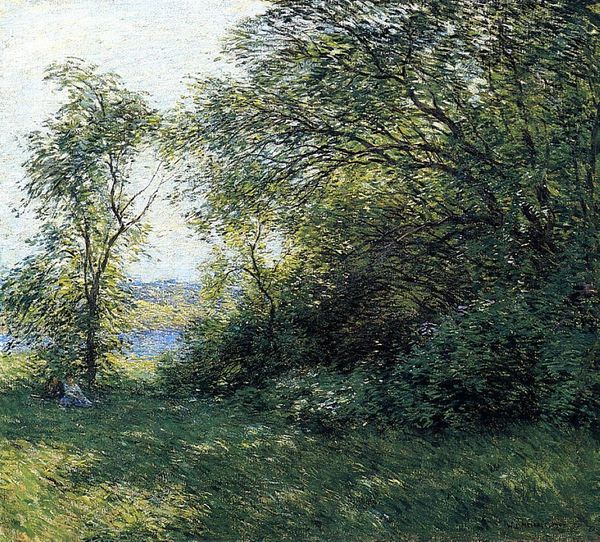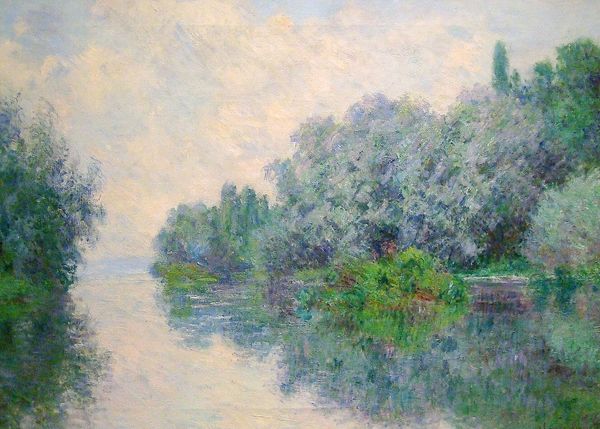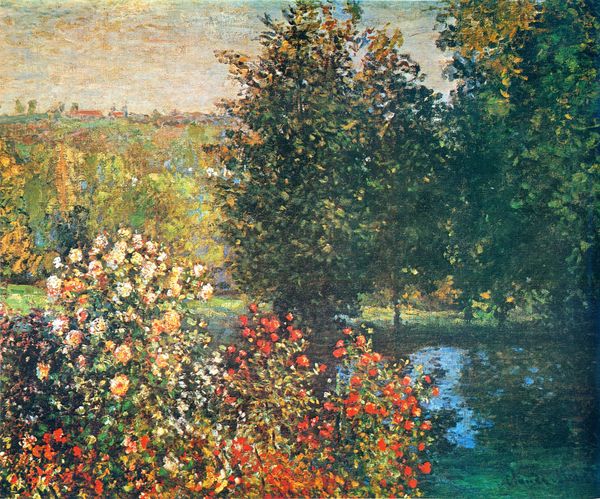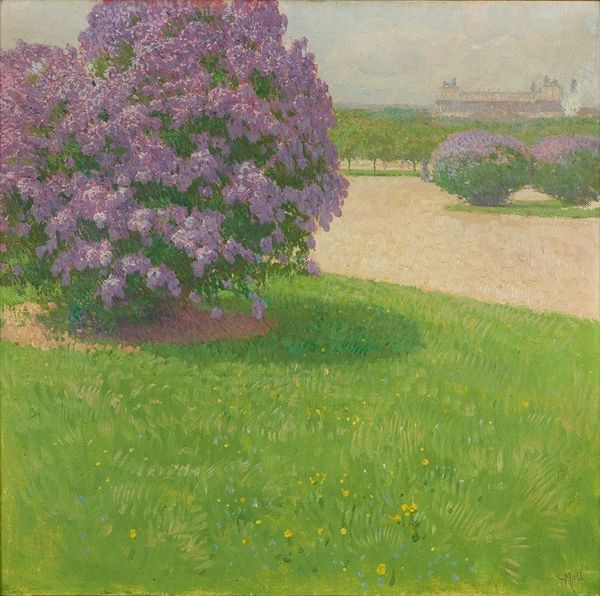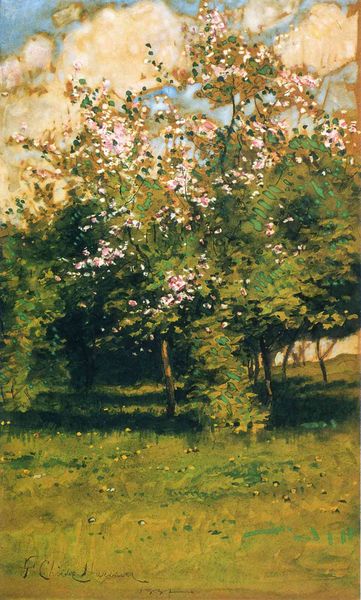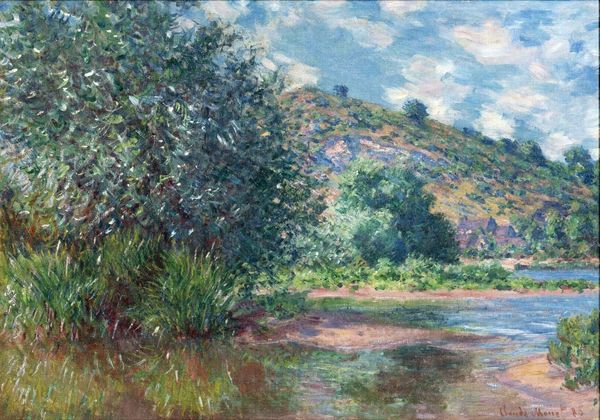
Copyright: Public domain
Editor: Willard Metcalf's "Mountain Laurel," painted in 1905, is an oil painting currently housed at the New Britain Museum of American Art. I find the texture so compelling; the blooms seem almost tactile. How would you interpret its composition? Curator: The visual construction reveals a keen interest in the interplay of light and form. Observe how the dabs of color coalesce to create a sense of depth, leading the eye towards the serene water in the background. Note, too, the distribution of weight across the canvas, with the density of the foliage counterbalancing the open expanse of sky. Editor: So, you're focusing on how the visual elements themselves create meaning, rather than the subject matter. Curator: Precisely. One must consider how the artist employs impasto to mimic the density of the blooms and the atmospheric perspective that softens the distant landscape. It is a carefully orchestrated arrangement of painterly marks. The juxtaposition of the cool whites and greens with warmer earth tones creates a compelling contrast. Do you see the subtle variations within the color palette? Editor: Yes, I see what you mean. The different shades of white and green contribute to the work’s realism, which counters my expectation for romanticism. I would have expected heightened drama. Curator: Consider that it may suggest an understated romanticism. In which case, note the artist’s skill in balancing representation and expression. This gives us, as interpreters, much to examine. Editor: Thank you. I hadn’t thought about it that way, but I see how closely observing the formal qualities can enrich my understanding. Curator: Indeed, a focus on composition can be very insightful, when trying to evaluate visual art.
Comments
No comments
Be the first to comment and join the conversation on the ultimate creative platform.
